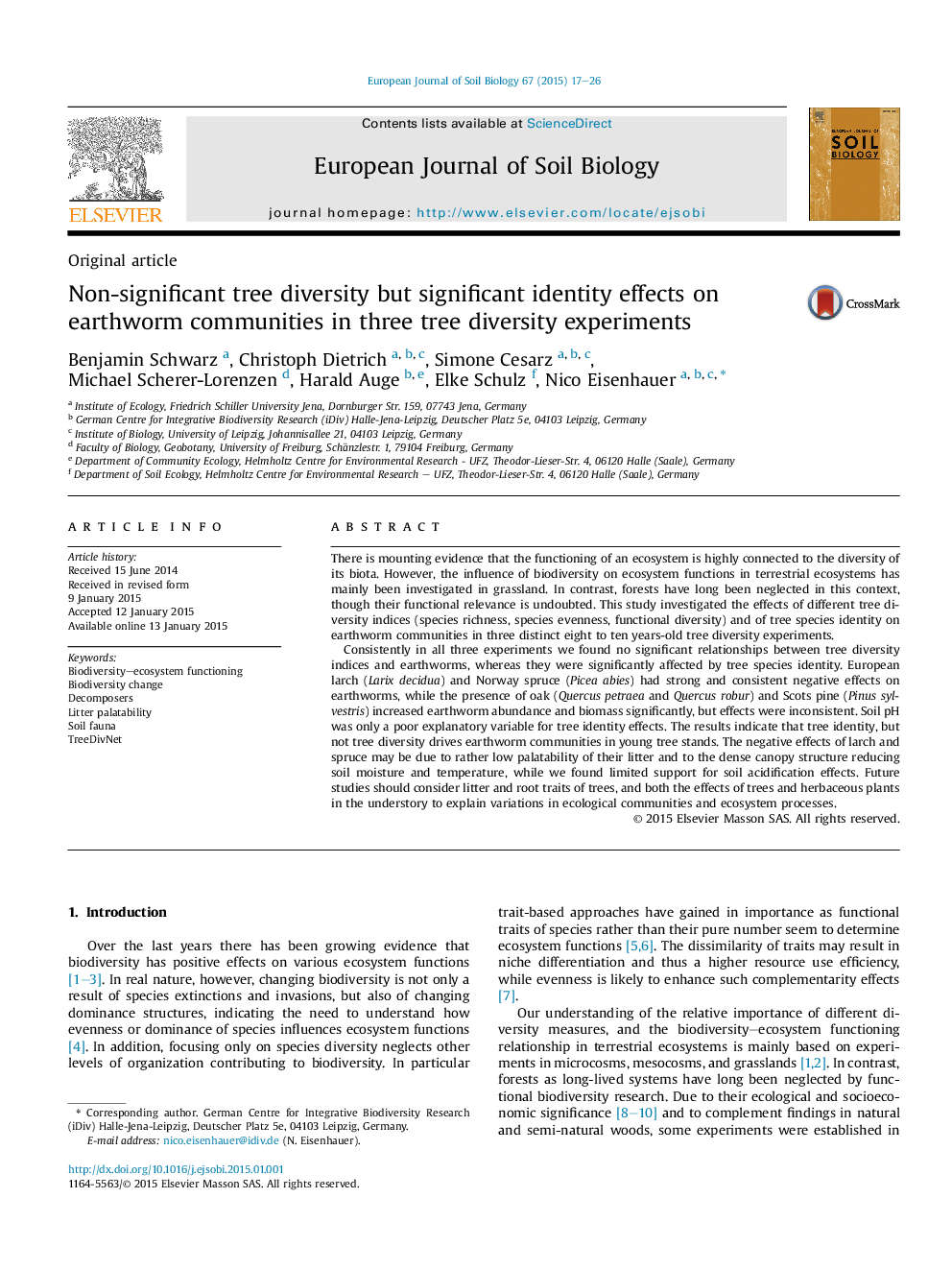| کد مقاله | کد نشریه | سال انتشار | مقاله انگلیسی | نسخه تمام متن |
|---|---|---|---|---|
| 4391783 | 1618125 | 2015 | 10 صفحه PDF | دانلود رایگان |
• We studied earthworm communities in three distinct tree diversity experiments.
• Experiments manipulated tree species richness, evenness, and functional diversity.
• Consistently, tree identity but not tree diversity affected earthworm communities.
• European larch and Norway spruce had strong negative effects on earthworms.
• Future studies should consider herbaceous vegetation, soil water and temperature.
There is mounting evidence that the functioning of an ecosystem is highly connected to the diversity of its biota. However, the influence of biodiversity on ecosystem functions in terrestrial ecosystems has mainly been investigated in grassland. In contrast, forests have long been neglected in this context, though their functional relevance is undoubted. This study investigated the effects of different tree diversity indices (species richness, species evenness, functional diversity) and of tree species identity on earthworm communities in three distinct eight to ten years-old tree diversity experiments.Consistently in all three experiments we found no significant relationships between tree diversity indices and earthworms, whereas they were significantly affected by tree species identity. European larch (Larix decidua) and Norway spruce (Picea abies) had strong and consistent negative effects on earthworms, while the presence of oak (Quercus petraea and Quercus robur) and Scots pine (Pinus sylvestris) increased earthworm abundance and biomass significantly, but effects were inconsistent. Soil pH was only a poor explanatory variable for tree identity effects. The results indicate that tree identity, but not tree diversity drives earthworm communities in young tree stands. The negative effects of larch and spruce may be due to rather low palatability of their litter and to the dense canopy structure reducing soil moisture and temperature, while we found limited support for soil acidification effects. Future studies should consider litter and root traits of trees, and both the effects of trees and herbaceous plants in the understory to explain variations in ecological communities and ecosystem processes.
Journal: European Journal of Soil Biology - Volume 67, March–April 2015, Pages 17–26
